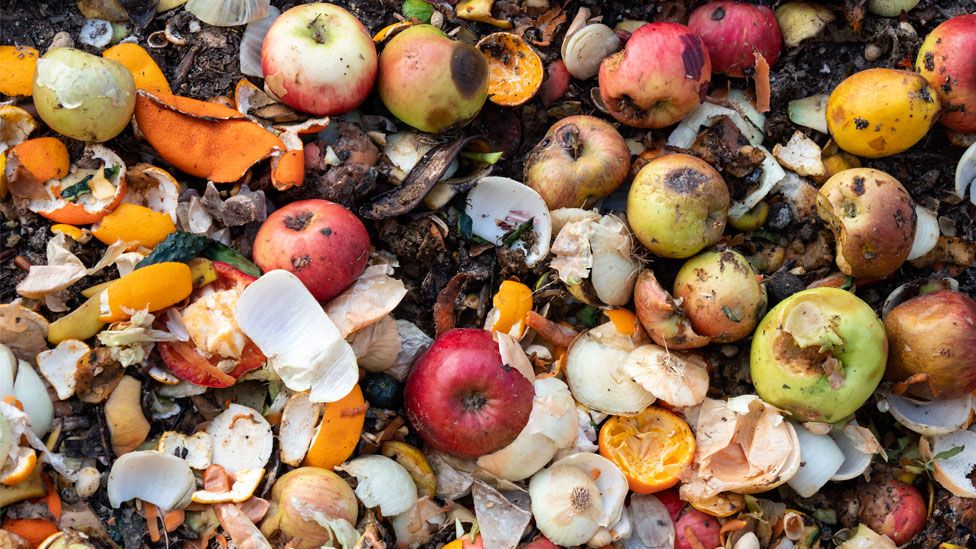How Much Food Waste In United States Yearly?
In a world facing both food scarcity and environmental challenges, understanding and addressing the issue of food waste is of paramount importance. Surprisingly, one-third of all food produced for human consumption is wasted yearly, accounting for 8% of global greenhouse gas emissions.
The food waste in united states ranks third in the world regarding food waste per capita, after only China and India. Americans threw out more food in 2020 than the population of the United Kingdom, Germany, France, Italy, and Sweden combined. We examine waste food data in America to understand better the causes and the negative impact on the environment and food security.
This article dives deep into the staggering problem of how much food goes to waste in America each year, exploring its causes, consequences, and potential solutions.
What exactly is food waste?

Food waste is defined as safe, high-quality food that is discarded rather than consumed. Waste food happens for several causes, including:
- Uneaten food discarded in homes, supermarkets, and restaurants
- Crops left in fields due to poor crop prices or an abundance of the same crops
- Problems with food manufacturing and transportation
- Food that does not satisfy store color and aesthetic criteria
Examples of food waste in United States include:
- Farm Level: Farmers often discard imperfect or surplus produce, contributing to substantial losses before the food even reaches the market.
- Retail Sector: Grocery stores and supermarkets frequently dispose of products that are close to their sell-by or expiration dates, even if they are still safe to consume.
- Consumer Household: Households are a major source of waste food, as uneaten leftovers, spoiled items, and forgotten produce often end up in the trash.
- Restaurants and Food Services: Restaurants, catering services, and institutional cafeterias discard sizable amounts of food due to overproduction, plate waste, or outdated menu items.
- Supply Chain: Food can also be wasted during transportation, storage, and distribution, further exacerbating the issue.
The Alarming Statistics:
Food waste in United States has reached alarming levels. According to the U.S. Department of Agriculture (USDA), approximately 30-40% of the food supply goes to waste yearly. This translates to a staggering 133 billion pounds of food discarded annually.
- The Economic Toll
Food waste is not just an ethical concern; it also takes a considerable toll on the economy. The food waste in united states each year is estimated at $161 billion. This wastefulness hits consumers and businesses hard, leading to higher food prices and economic losses.
The Primary Causes of Food waste in united states:
One major contributor to waste food is the misunderstanding of “sell-by” and “use-by” dates on food packaging. Many consumers mistakenly believe these dates signify the food’s safety, leading to unnecessary discards. The reality, however, is that these dates primarily indicate peak freshness, not an abrupt decline in safety. This misconception drives countless Americans to toss perfectly edible food prematurely.
- Oversupply and Overbuying:
The culture of abundance in America often results in overbuying groceries. Supermarkets continually stock their shelves, and consumers are tempted by bulk purchases, often leading to excess food that ends up wasted. It’s a paradoxical situation where the desire for more options clashes with the capacity to consume them, resulting in mountains of food ending up in landfills.
- Uneven Distribution:
Another contributing factor is the uneven distribution of food. While some areas face food scarcity, others have an abundance, which can lead to food spoilage and waste. This inequality is not only ethically problematic but also ecologically detrimental. Finding ways to bridge this gap and ensure that food reaches those who need it most is essential in reducing waste food.
1. Expiry Dates and Perceptions:
To tackle the issue of waste food effectively, it’s crucial to understand the meaning behind “sell-by” and “use-by” dates. These dates are not firm indicators of food safety but guidelines for optimal quality. “Sell-by” dates are intended for retailers, indicating when a product should be removed from the shelves to maintain peak freshness. “Use-by” dates suggest when the product is at its best quality, but it’s often safe to consume after this date as long as it’s been stored correctly.
- Public Perception and Fear of Food Poisoning:
The fear of food poisoning often drives consumers to discard items as soon as they reach their “use-by” date. However, it’s essential to dispel this misconception. Foodborne illnesses are usually caused by contamination during preparation, not because the food magically turns harmful on the date printed on the package. Educating consumers about safe food handling practices can help reduce this unfounded fear.
2. Oversupply and Overbuying:
Supermarkets play a significant role in perpetuating the culture of overbuying. Their strategies, such as buy-one-get-one-free offers and discounts on bulk purchases, entice consumers to purchase more than they can consume reasonably. This results in food piling up in homes, only to be discarded when it spoils.
- Meal Planning and Responsible Shopping:
To combat overbuying, consumers can embrace responsible shopping practices and meal planning. Creating shopping lists, sticking to portion sizes, and being mindful of expiry dates can help individuals avoid purchasing excessive food. Additionally, embracing a “less is more” mentality can reduce waste and save money and the environment.
3. Uneven Distribution:
The stark contrast between food deserts, where access to fresh and affordable food is limited, and areas with surpluses highlight the issue of uneven food distribution. To address this, community initiatives and government programs can work together to redirect surplus food to needy areas. Food banks, for instance, play a vital role in redistributing excess food to disadvantaged communities.
- Reducing Food Miles:
Reducing the distance food travels from production to consumption can minimize spoilage during transportation. Supporting local agriculture and implementing efficient distribution networks can help ensure food reaches consumers without unnecessary delays and losses.
Solutions in Action:
Feeding America is a nationwide network of food banks that plays a pivotal role in reducing food waste. These food banks rescue millions of pounds of surplus food from manufacturers, retailers, and restaurants. This food is then distributed to individuals and families facing hunger. By effectively channeling excess food, Feeding America addresses immediate hunger and mitigates food wastage on a grand scale.
- Local Food Banks: Nourishing Communities:
In addition to large-scale organizations like Feeding America, local food banks are unsung heroes in the fight against waste food. They work tirelessly within their communities, partnering with grocery stores, restaurants, and individuals to salvage and distribute food that would otherwise end up in landfills. These local efforts directly impact reducing food wastage at the grassroots level.
- Food Labels Decoded:
One of the most significant contributors to household food waste is a lack of understanding about food labels. Many consumers discard items prematurely due to confusion about “best by” and “use by” dates. Educating consumers about these labels and the actual food safety beyond these dates is essential. This knowledge empowers individuals to make informed decisions and reduce waste food in their homes.
- Meal Planning: A Simple Yet Effective Strategy:
Encouraging consumers to plan their meals can significantly reduce waste food. When individuals plan their grocery shopping and meals ahead of time, they are less likely to purchase items that will go unused and eventually spoil. Additionally, meal planning can help people stick to their budgets and eat healthier, fresher food.
- Restaurants Embrace Smaller Portions:
Restaurants and fast-food chains are beginning to offer smaller portions as a response to food waste concerns and the obesity epidemic. Smaller portions not only prevent overeating but also reduce food wastage in restaurants. This shift toward moderation benefits consumers and the environment, demonstrating that less can be more.
- Helping the Less Fortunate:
Donating surplus food is a compassionate and practical way to assist the less fortunate in our communities. Many individuals and families struggle to put food on their tables, and donations can provide them with nutritious meals they might not otherwise afford. This practice fosters community and social responsibility, emphasizing that food should be shared rather than wasted.
- Redistributing Excess Food:
Businesses, particularly in the food industry, play a significant role in reducing waste food. Instead of discarding excess food, they can actively participate in redistribution efforts. For instance, restaurants and catering services can partner with local food banks to donate leftover meals or surplus ingredients. By doing so, they contribute to a worthy cause and minimize their environmental footprint.
- Sustainable Farming Practices:
Efficient food management begins at the source—the farms. Farmers can implement sustainable farming practices that reduce overproduction and minimize waste. This includes optimizing crop yields, reducing food loss during harvesting and transportation, and exploring alternative uses for surplus crops.
The Consequences of Food Waste:
Food waste is a global issue that has far-reaching consequences, affecting our environment, economies, and societies. Here, we will look into the various repercussions of waste food, emphasizing the urgency of addressing this problem.
- Water Waste:
Producing food requires an enormous amount of water. From irrigation to livestock, water is an indispensable resource in agriculture. When food goes to waste, the water used in its production is squandered. This wastage is particularly alarming in a world where water scarcity is a looming threat.
- Water Scarcity Amplification:
Food waste exacerbates water scarcity issues in regions struggling with limited water resources. The more we waste, the greater the strain on water supplies, making it increasingly challenging for communities to access clean and sustainable water sources.
- Energy Consumption:
The energy footprint of food production is vast. It encompasses everything from the energy required to run farm machinery to the electricity needed for food processing and transportation. When we throw away food, we are essentially wasting the energy embedded in it.
- Contributing to Climate Change:
Energy waste resulting from waste food significantly contributes to greenhouse gas emissions. The decomposition of food in landfills produces methane, a potent greenhouse gas. We can help minimize climate change by minimizing food waste.
- Financial Losses:
Food waste carries significant economic costs. Households, restaurants, and businesses collectively spend billions of dollars on food that ends up in the trash. This represents a squandering of resources that could have been allocated elsewhere.
- Global Economic Impact:
On a global scale, waste food affects economies by increasing food prices and straining resources. It hampers economic development, especially in countries where agriculture is a major industry.
- Food Insecurity:
Ironically, as we waste food, millions of people worldwide go hungry. Food waste widens the gap between those with access to plenty and those who struggle to find their next meal.
- Ethical Dilemmas:
Food waste raises ethical concerns, especially in a world where so many are in need. Is it morally justifiable to throw away food while others go hungry? This question challenges our values and calls for a reevaluation of our food consumption habits.
- Landfill Pollution:
When waste food ends up in landfills, it decomposes anaerobically, releasing methane gas. This contributes to climate change and poses risks to local air quality.
- Soil Degradation:
Food waste disposal in landfills can also lead to soil contamination and degradation. The chemicals from decomposing food can leach into the ground, harming ecosystems and agricultural lands.
Conclusion
The quantity of food waste in united states each year is astonishing and heartbreaking. The good news is that individuals, corporations, and organizations are working to address this problem. We can alleviate poverty, safeguard the environment, and boost the economy by eliminating waste food.
Food waste in united states needs a multifaceted strategy. We must educate consumers about the meaning of food expiry dates, promote responsible shopping practices, and address the inequality in food distribution. By taking these steps, we can reduce the staggering amount of food wasted each year and contribute to a more sustainable and equitable food system.
Remember that every little bit helps in the battle against waste food. We can significantly influence and build a more sustainable future if we work together.
FAQs
Plan your meals and make a shopping list. Use leftovers creatively. Understand food date labels.
Food waste contributes to methane emissions. It depletes valuable resources like water and land.
Yes, the U.S. government has set targets to reduce food waste by 50% by 2030.
Implement food tracking systems. Donate surplus food to food banks.
Food waste is a global issue, with countries worldwide working to address it.
Yes, in most cases, food is still safe after the “use-by” date as long as it has been stored properly. It’s more about quality than safety.
Individuals can reduce food waste by planning meals, using leftovers creatively, and buying only what they need. Being mindful of expiry dates is also important.
Supermarkets can reduce food waste by offering smaller portion options, minimizing discounts on bulk purchases, and donating surplus food to charities.



